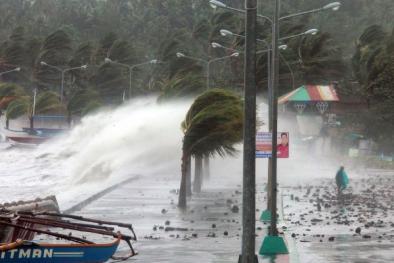Super Typhoon Haiyan's Intensification and Unusually Warm Sub-Surface Waters

Super Typhoon Haiyan tracked over surface waters that were of near-average warmth, 29.5 - 30.5°C (85 - 87°F.) However, the waters at a depth of 100 meters (328 feet) beneath Haiyan during its rapid intensification phase were a huge 3°C above average, according to Professor I-I Lin of the Department of Atmospheric Science at the National Taiwan University...As the typhoon stirred this unusually warm water to the surface, the storm was likely able to feed off the heat, allowing Haiyan to intensify into one of the strongest tropical cyclones ever observed.
The sub-surface waters east of the Philippines have warmed dramatically over the past twenty years. According to Pun et al. (2013), "Recent increase in high tropical cyclone heat potential area in the Western North Pacific Ocean", the depth to where ocean temperatures of at least 26°C (79°F) penetrates has increased by 17% since the early 1990s, and the Tropical Cyclone Heat Potential has increased by 13%. The warm-up is due to an increase in the surface winds blowing across the region--the trade winds--which have caused a southward migration and strengthening of the North Equatorial Current (NEC) and the North Equatorial Counter Current (NECC). The strong trade winds have pushed a large amount of water up against the east coast of the Philippines in the past twenty years, resulting in a rate of sea level rise of 10 mm per year--more than triple the global average of 3.1 mm/yr. This extra sea level rise contributed to the storm surge damage from Super Typhoon Haiyan. Sea level rise data from Legaspi in the Eastern Philippines shows a rise of about 305 mm (12 inches) since 1949. For comparison, global average sea level rose 7.5" (190 mm) since 1901. Part of the rise along the eastern Philippine coast is from tectonic processes--the subsidence of the Philippine plate under the Eurasian plate--but most of it is due to the stronger trade winds piling up warm water along the coast, and the fact that warmer waters expand, raising sea level.
Related Content




